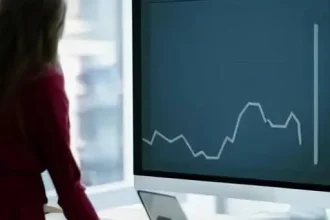In the colossal arena of global finance, few markets command as much sheer volume and constant dynamism as the foreign exchange, or forex, market․ Operating 24 hours a day, five days a week, it is a perpetually churning ocean of currencies, where trillions of dollars are exchanged daily․ While individual retail traders often dabble in its volatile currents, it is the world’s leading financial institutions – the venerable banks – that truly orchestrate and dominate this incredibly complex ecosystem․ Their involvement is not merely opportunistic; it is profoundly systemic, a critical cog in the machinery of global commerce and a remarkably potent engine for their own prosperity․
Far from being a speculative sideline, the strategic engagement of banks in forex trading underpins virtually every international transaction, from multinational corporations settling cross-border invoices to individuals sending remittances home․ These powerful financial entities are not just participants; they are the very infrastructure, providing essential liquidity and facilitating the seamless flow of capital across borders․ Their motivations are multifaceted, spanning from fulfilling fundamental client needs to generating substantial proprietary profits, all while skillfully navigating an ever-shifting landscape of economic indicators and geopolitical shifts, effectively acting as the crucial intermediaries in a globally interconnected financial world․
Key Insights into the Forex Market & Banking Sector
| Aspect | Description | Key Statistic/Impact | Reference |
|---|---|---|---|
| Market Size | The foreign exchange market is the largest and most liquid financial market globally․ | Estimated daily turnover exceeding $7․5 trillion․ | BIS Triennial Survey |
| Primary Participants | Major commercial and investment banks, central banks, corporations, hedge funds, and retail traders․ | Banks account for the vast majority of interbank trading volume․ | BIS Triennial Survey |
| Core Functions of Banks | Facilitating client transactions, proprietary trading, market making, and risk management (hedging)․ | Providing essential liquidity and managing currency exposure for global commerce․ | |
| Market Making | Banks continuously quote bid and ask prices, earning a small spread on each trade․ | Ensures continuous liquidity, allowing trades to occur instantly at competitive prices․ | Federal Reserve Paper |
Beyond Client Services: The Quest for Profit
While servicing clients is undeniably a cornerstone, banks also engage in proprietary trading, leveraging their vast capital reserves and unparalleled market access to generate profits directly for themselves․ This involves taking strategic positions based on in-depth economic analysis, sophisticated predictive models, and a keen understanding of global macroeconomic trends․ Traders, often operating in high-pressure environments, are tasked with anticipating interest rate shifts, inflation data, and geopolitical events, skillfully executing trades that can yield substantial returns․ This speculative arm, while carrying inherent risks, is a powerful revenue driver, significantly contributing to a bank’s bottom line and cementing its position as a formidable market force․
Moreover, banks are the quintessential market makers within the interbank forex market․ Picture them as the central hubs of an intricate web, constantly quoting buying and selling prices for a multitude of currency pairs․ By continuously standing ready to buy or sell, they guarantee liquidity, ensuring that other banks, corporations, and even smaller financial institutions can execute their trades swiftly and efficiently․ The revenue generated from the bid-ask spread – the tiny difference between the price at which they buy and sell – accumulates into significant sums given the sheer volume of transactions, reinforcing their indispensable role in the global financial architecture and underscoring their remarkably effective operational model․
Mastering Risk and Embracing Innovation
Perhaps one of the most critically important reasons banks trade forex is risk management․ Banks themselves are exposed to currency fluctuations through their international lending, investment portfolios, and global operations; Hedging these exposures using forward contracts, options, and swaps is paramount to maintaining financial stability and protecting profitability․ By carefully managing these currency risks, they can insulate their balance sheets from adverse movements, a practice that not only safeguards their own assets but also allows them to confidently offer similar hedging solutions to their corporate clients, empowering businesses to thrive in an unpredictable global economy․
Looking ahead, the future of bank forex trading is being profoundly reshaped by technological advancements․ Artificial intelligence and machine learning algorithms are driving innovation, enabling banks to process vast amounts of data, identify intricate patterns, and execute trades with unprecedented speed and precision․ By integrating insights from AI-driven analytics, banks are enhancing their predictive capabilities, optimizing their trading strategies, and more effectively managing risk․ This technological frontier promises even greater efficiency and potentially larger profit margins, positioning forward-thinking institutions at the vanguard of financial evolution, strategically adapting to the demands of a data-intensive age․
The Enduring Influence
Ultimately, the reasons banks engage so deeply in forex trading are as fundamental as they are complex․ From facilitating the bedrock of international trade and investment to generating substantial profits through astute proprietary strategies and providing essential market liquidity, their role is indispensable․ As global economies become ever more interconnected, and as technology continues to push the boundaries of what’s possible, the influence of banks in the forex market is not merely enduring; it is evolving, promising a future where their strategic vision and technological prowess will continue to drive the world’s most dynamic financial arena․ The constant innovation and proactive engagement ensure that these financial titans remain at the very heart of global economic flow, shaping the financial landscape for decades to come․






